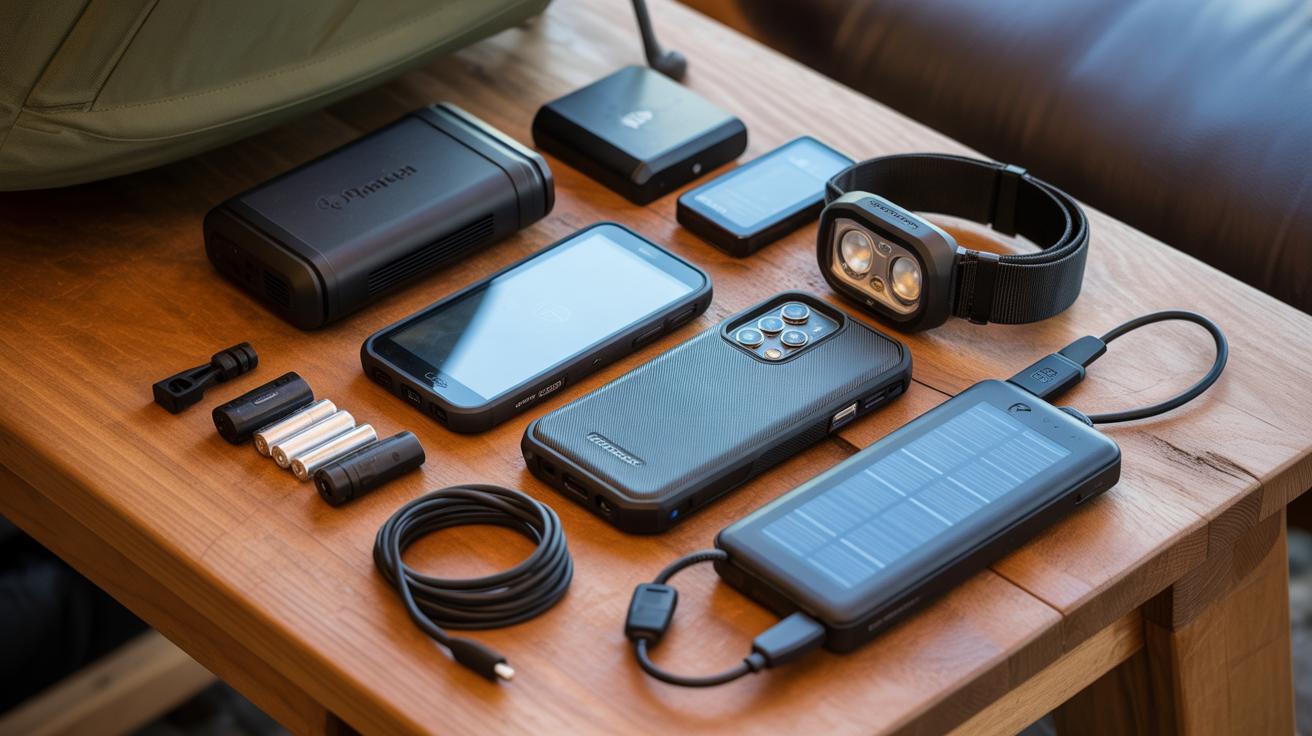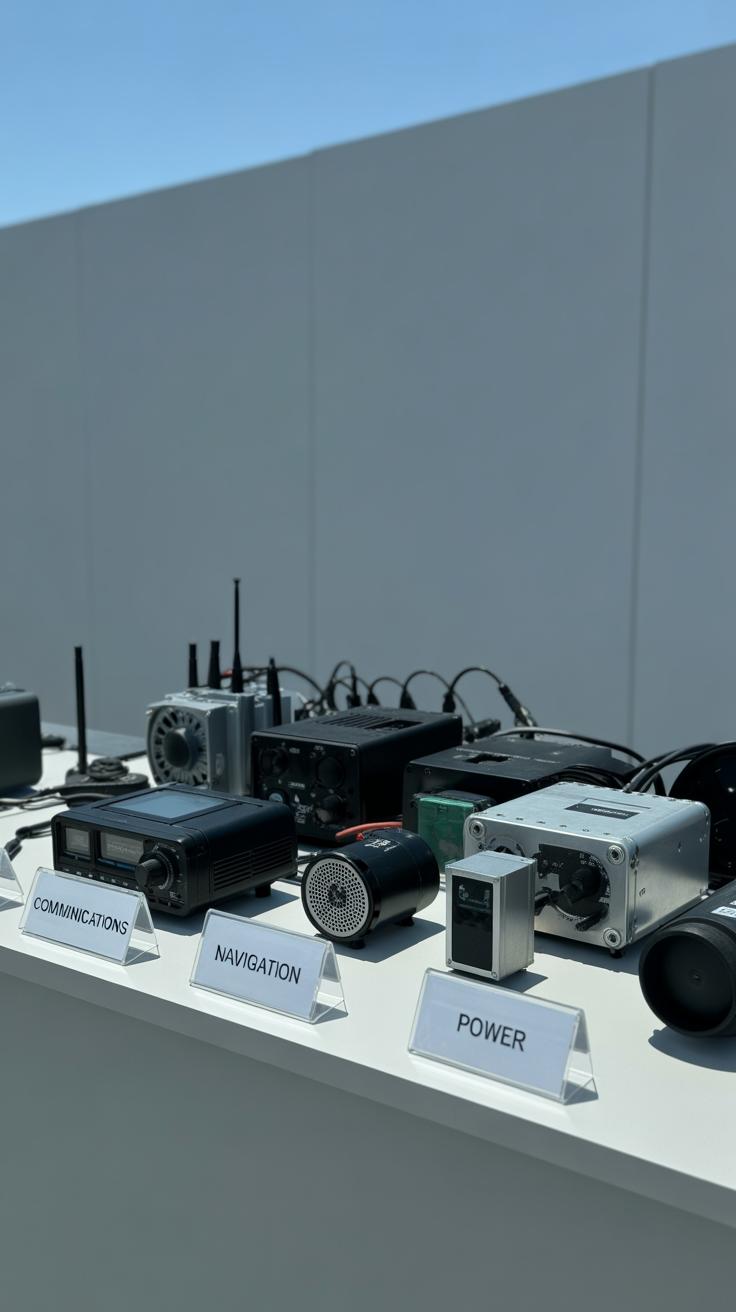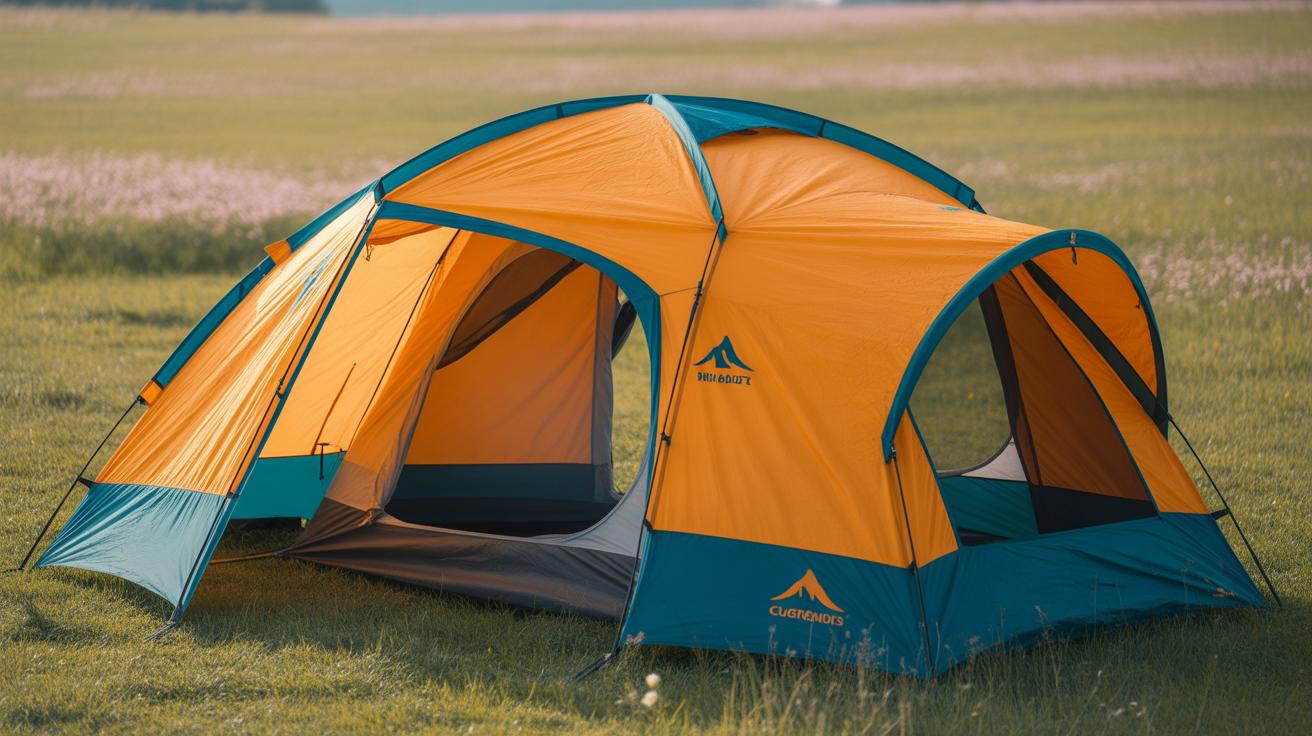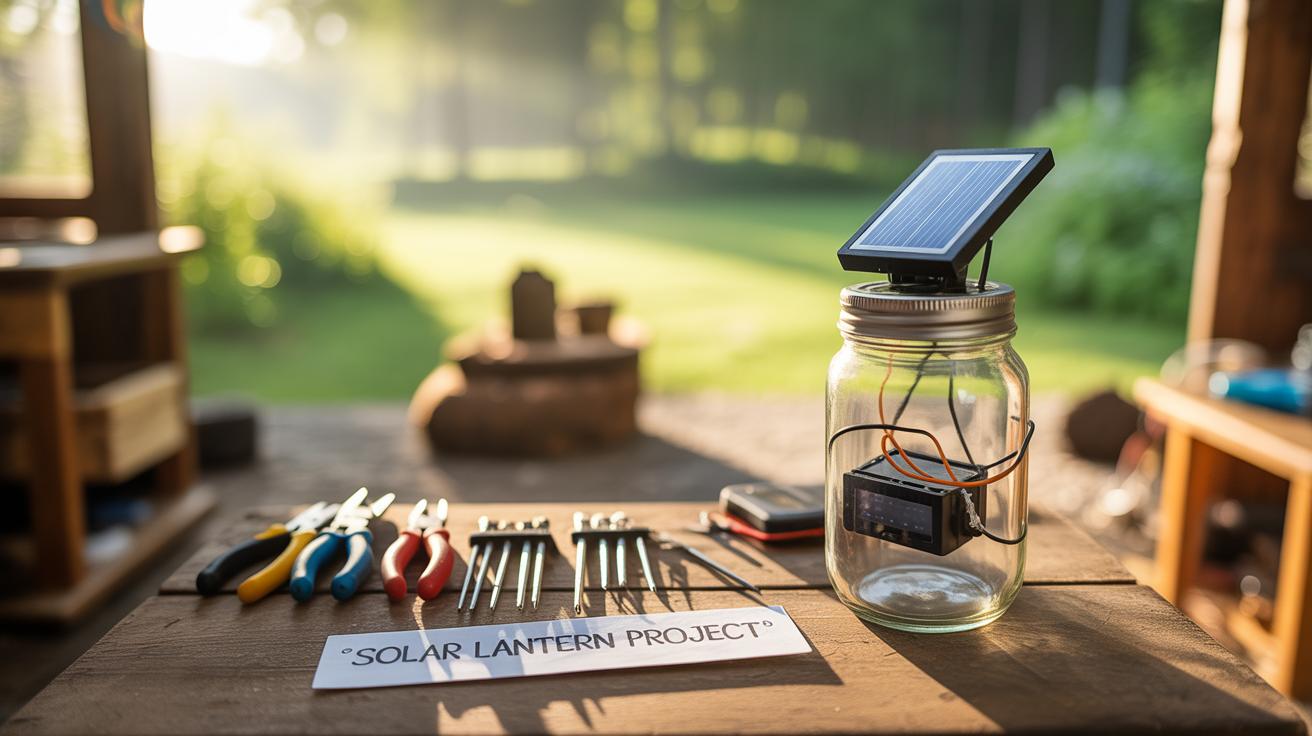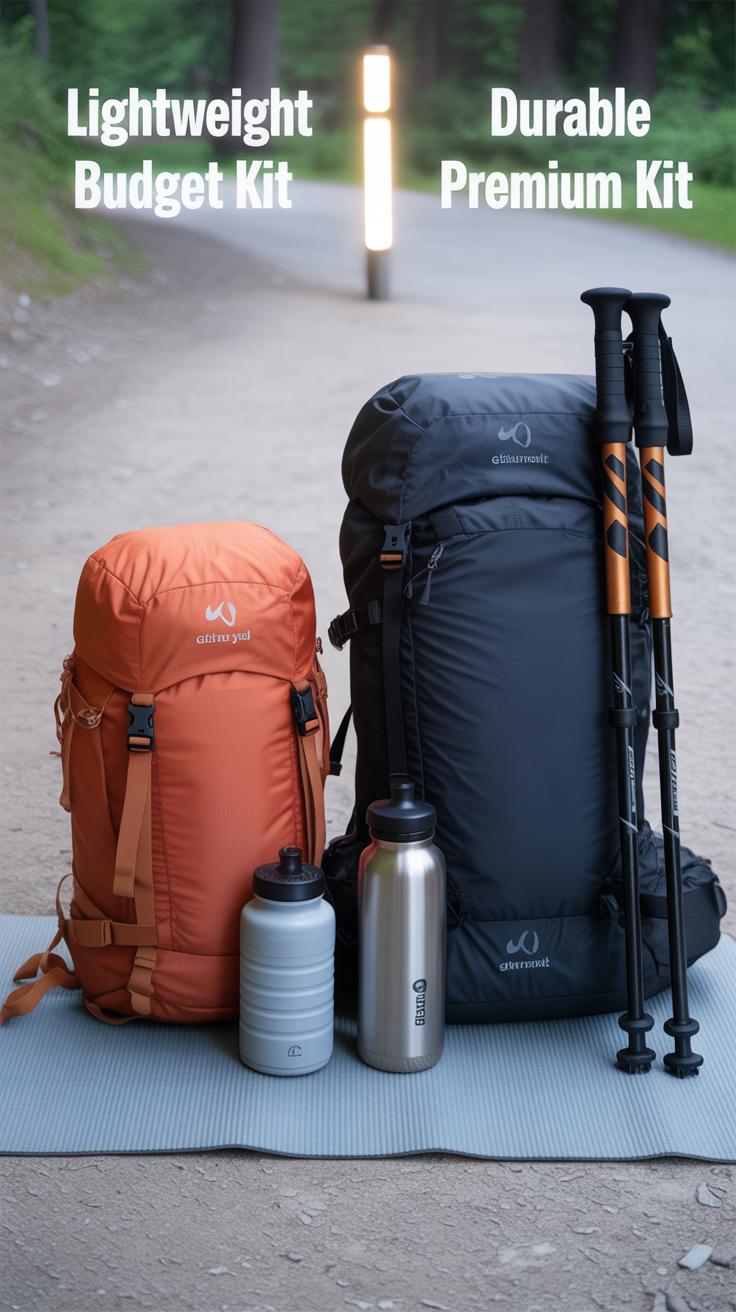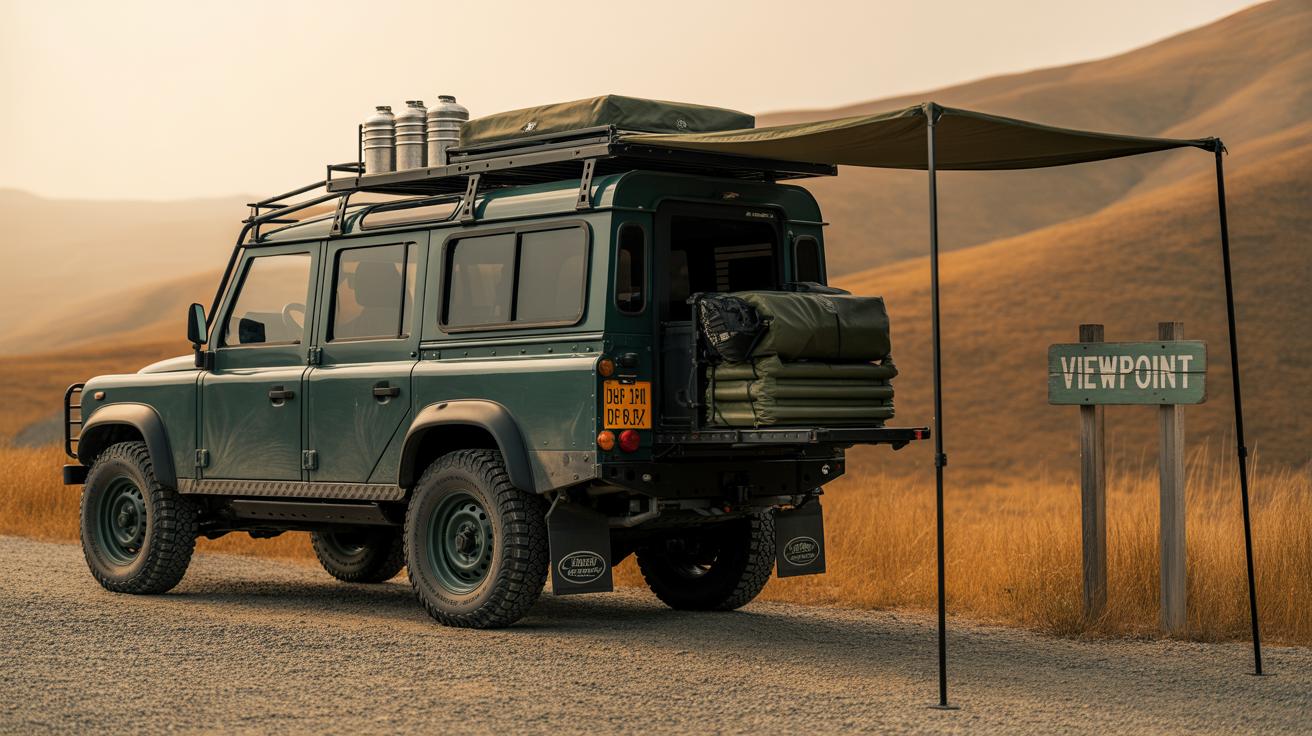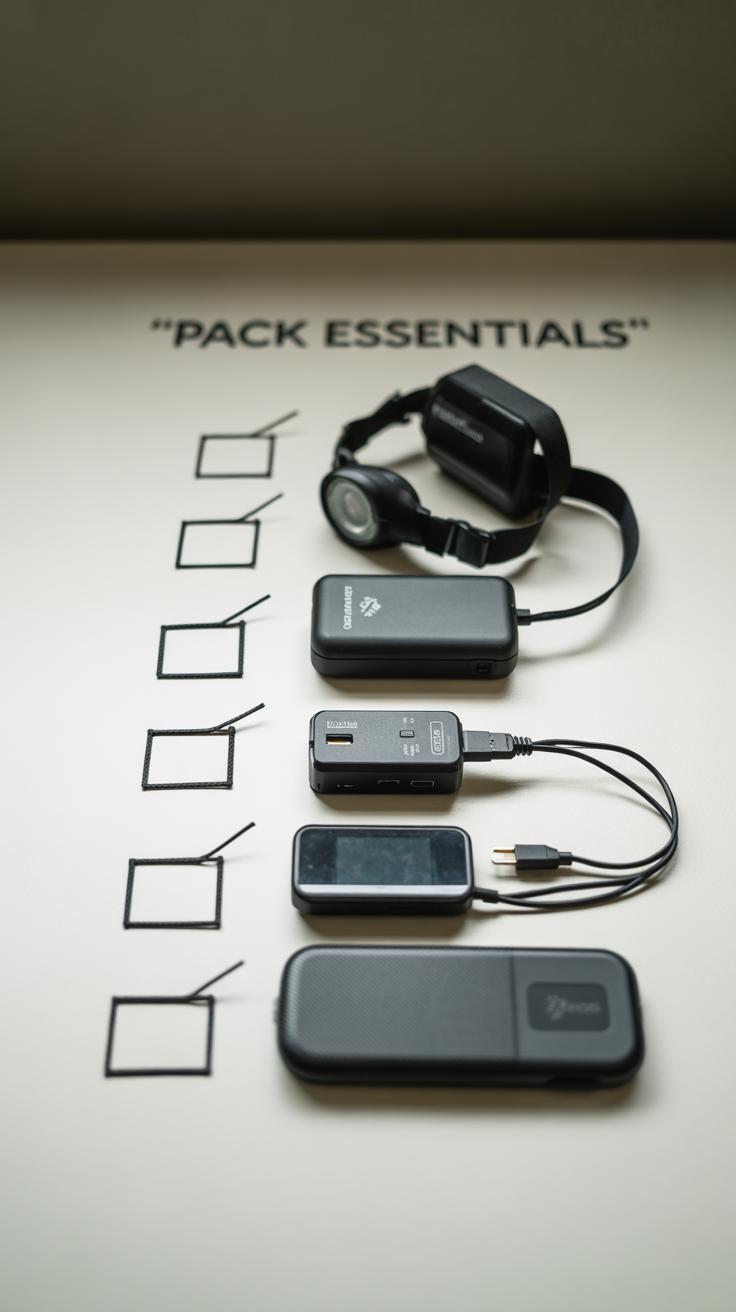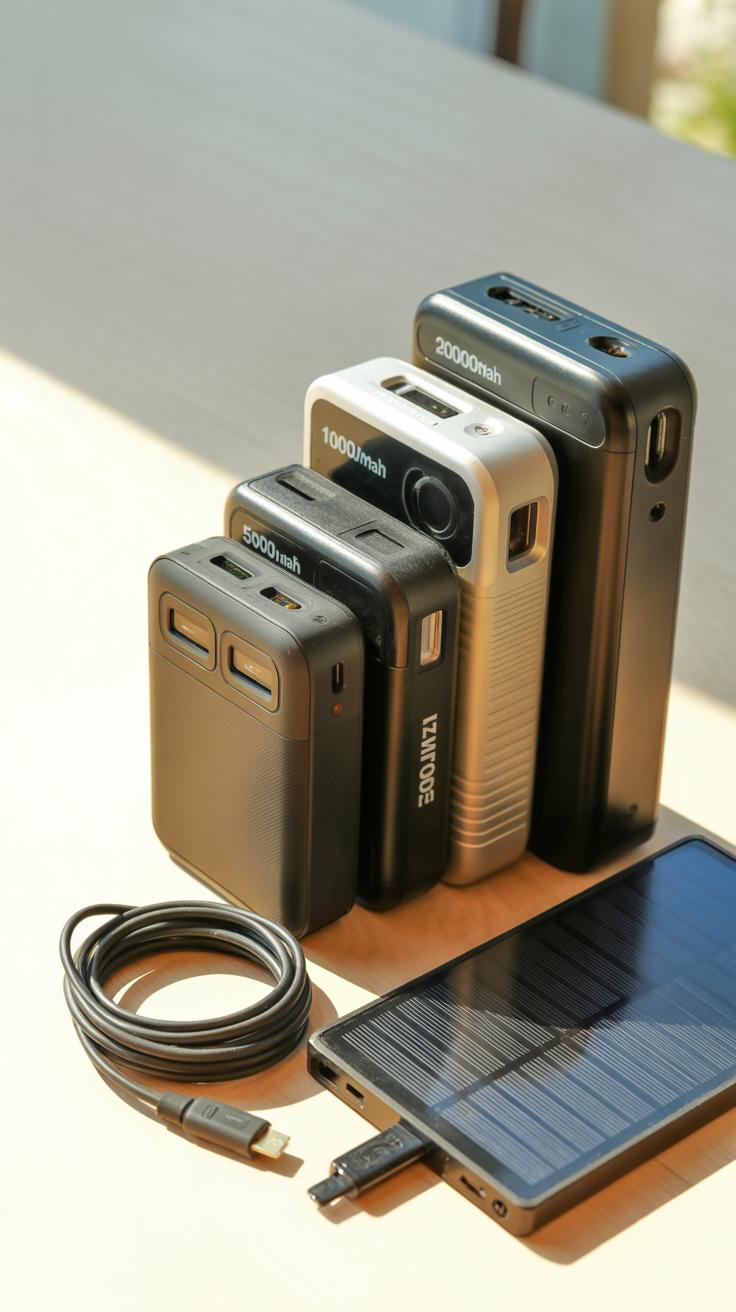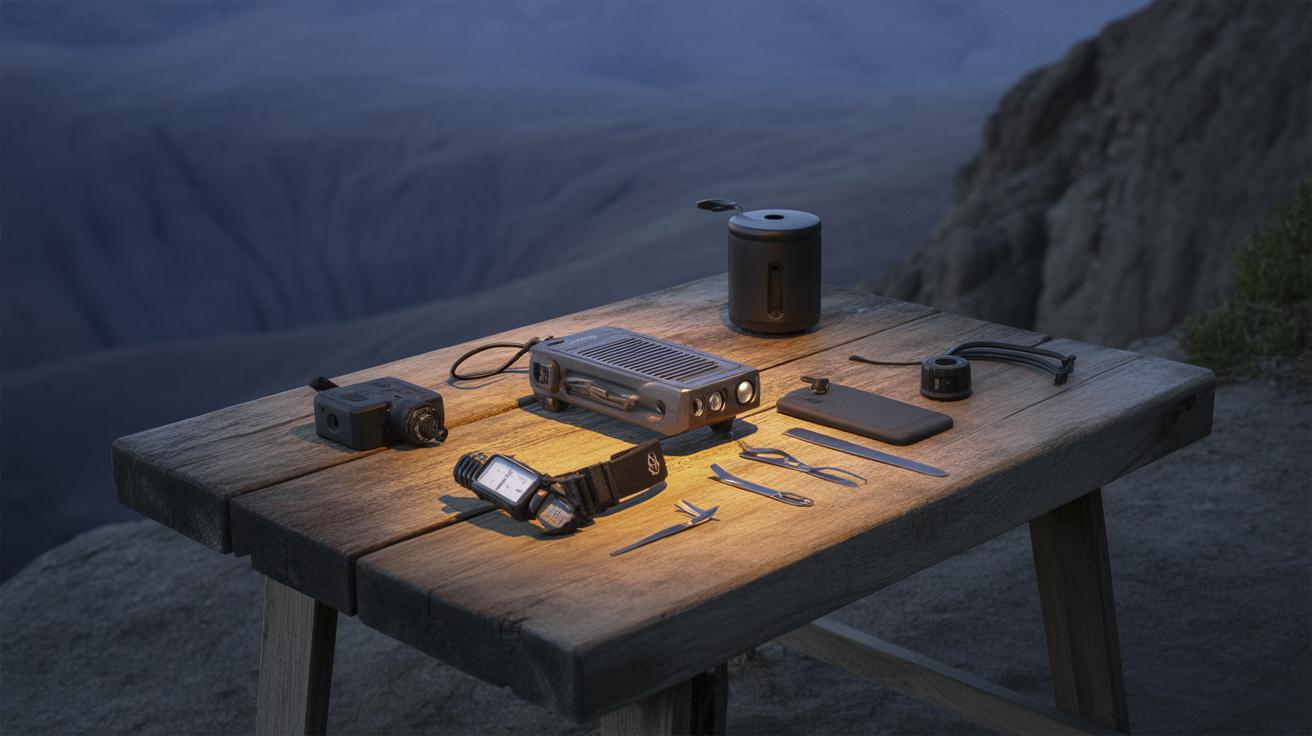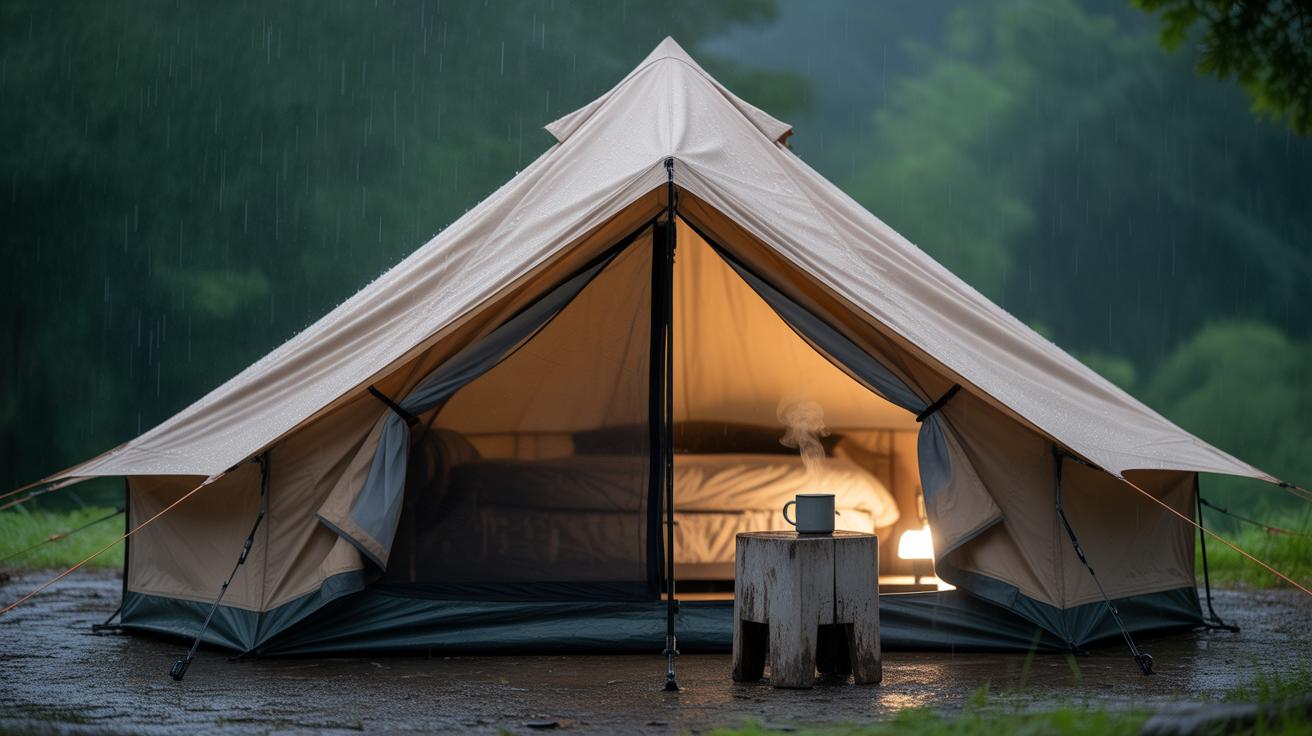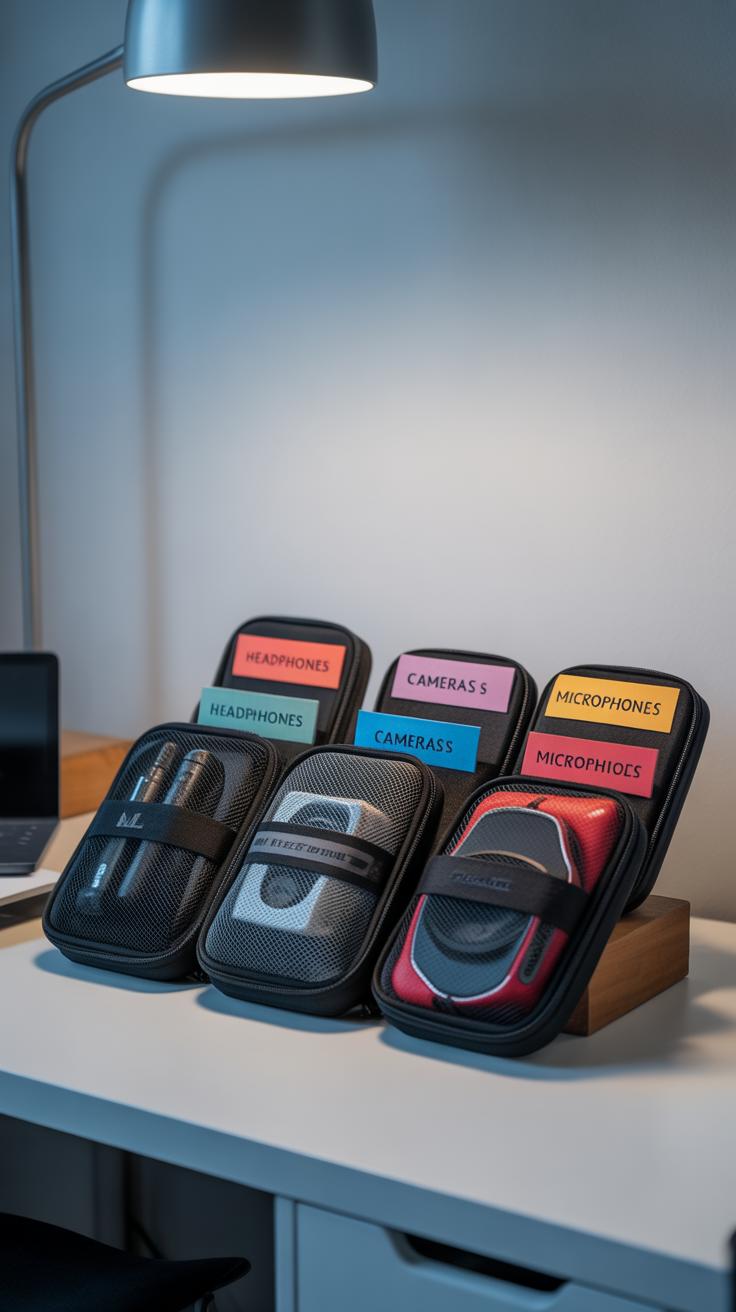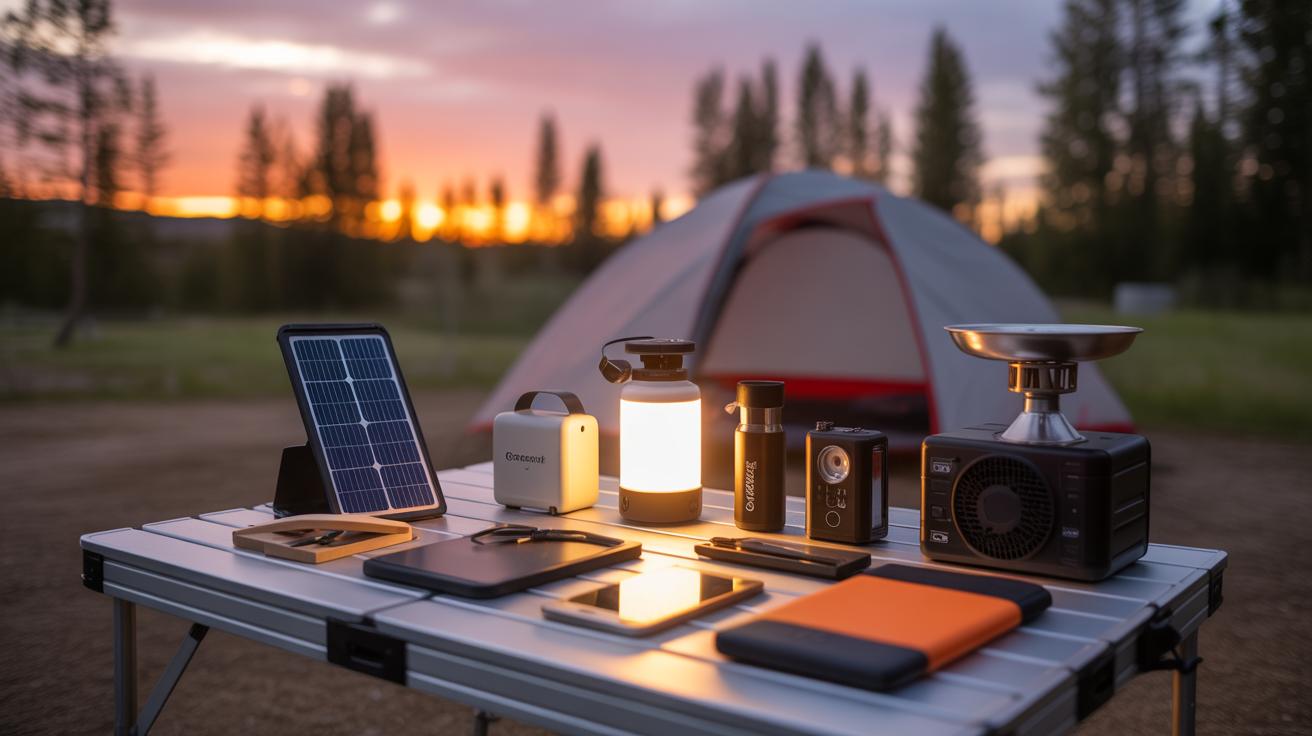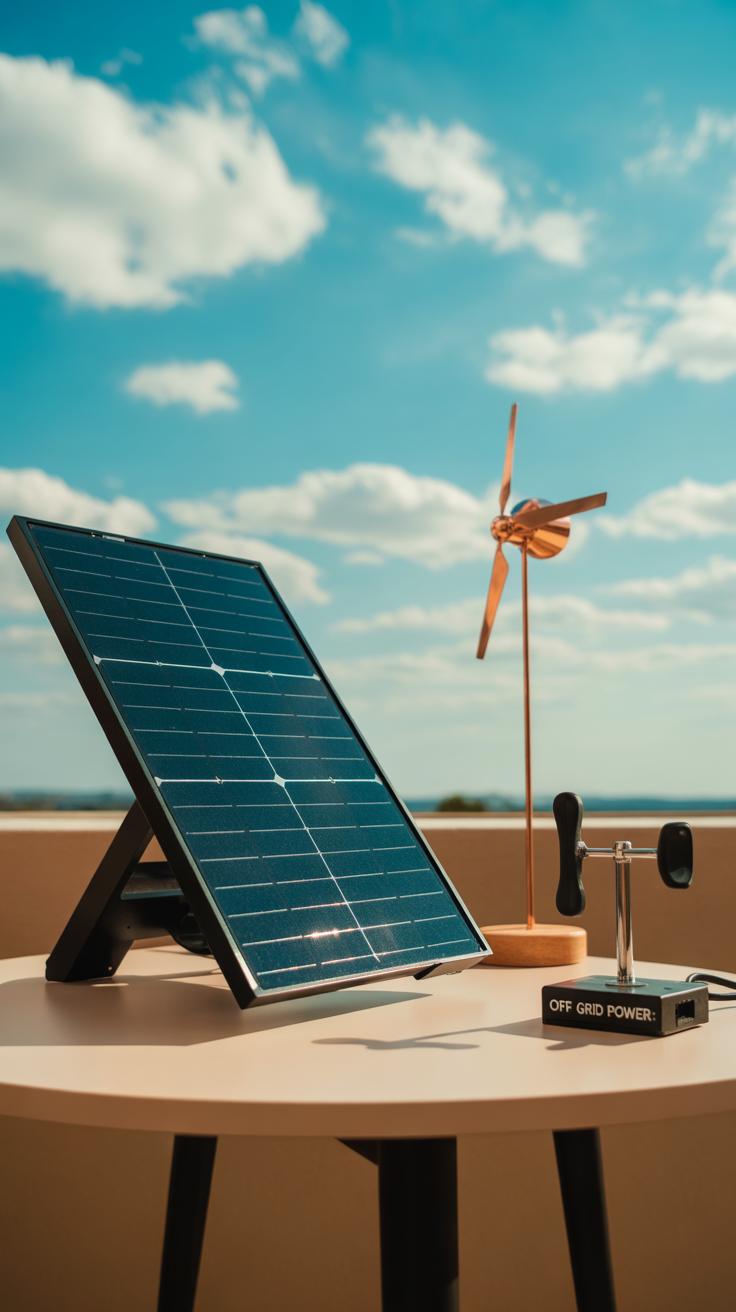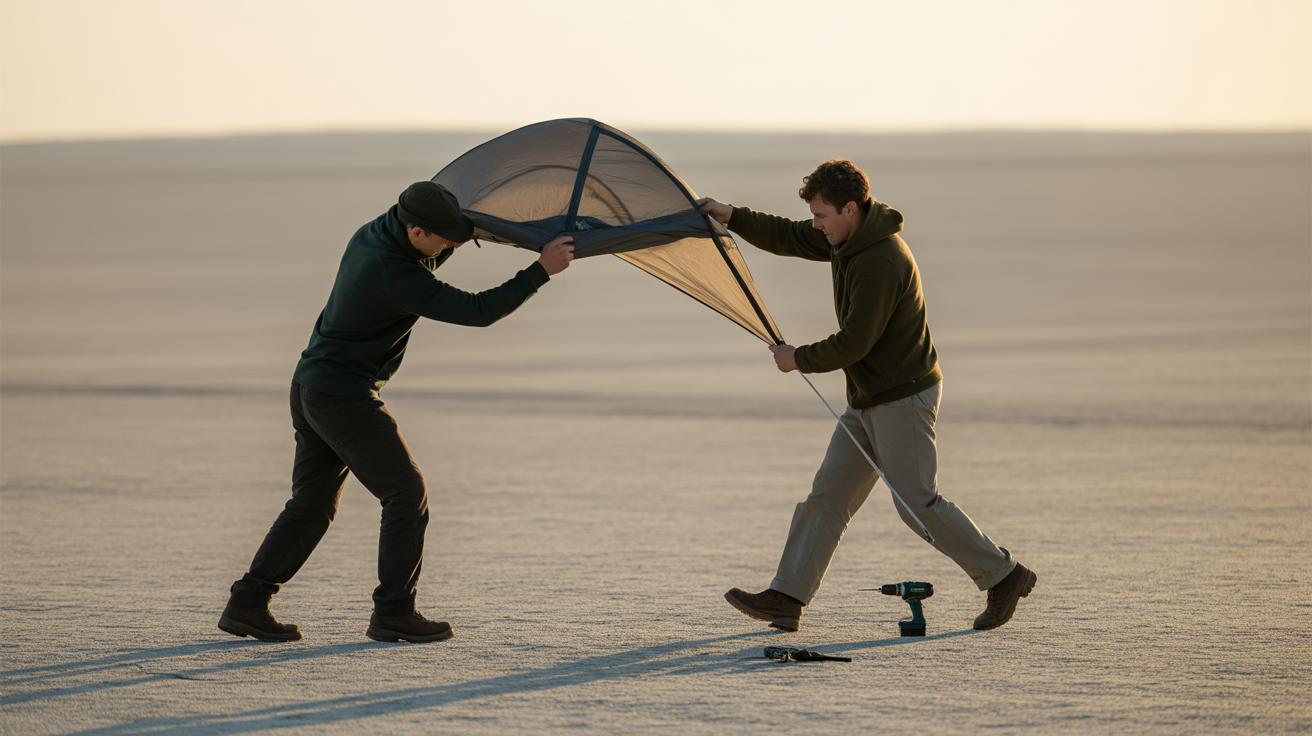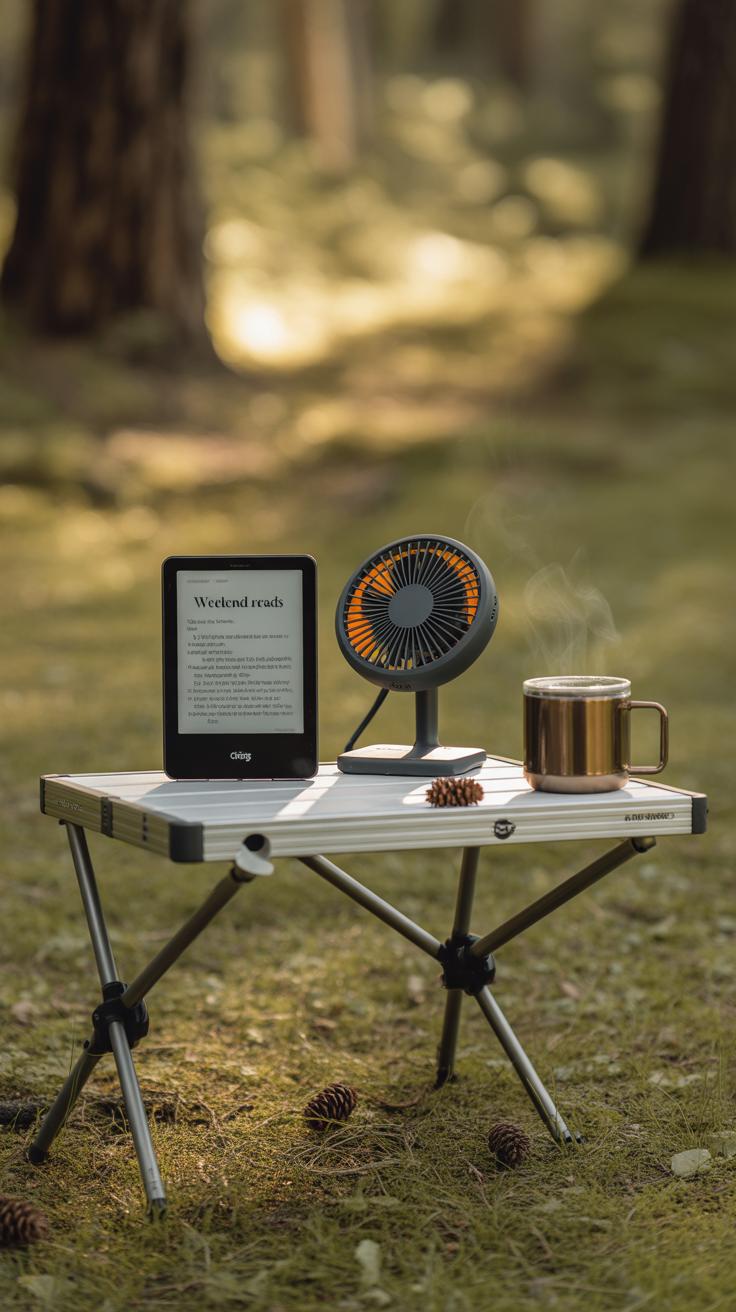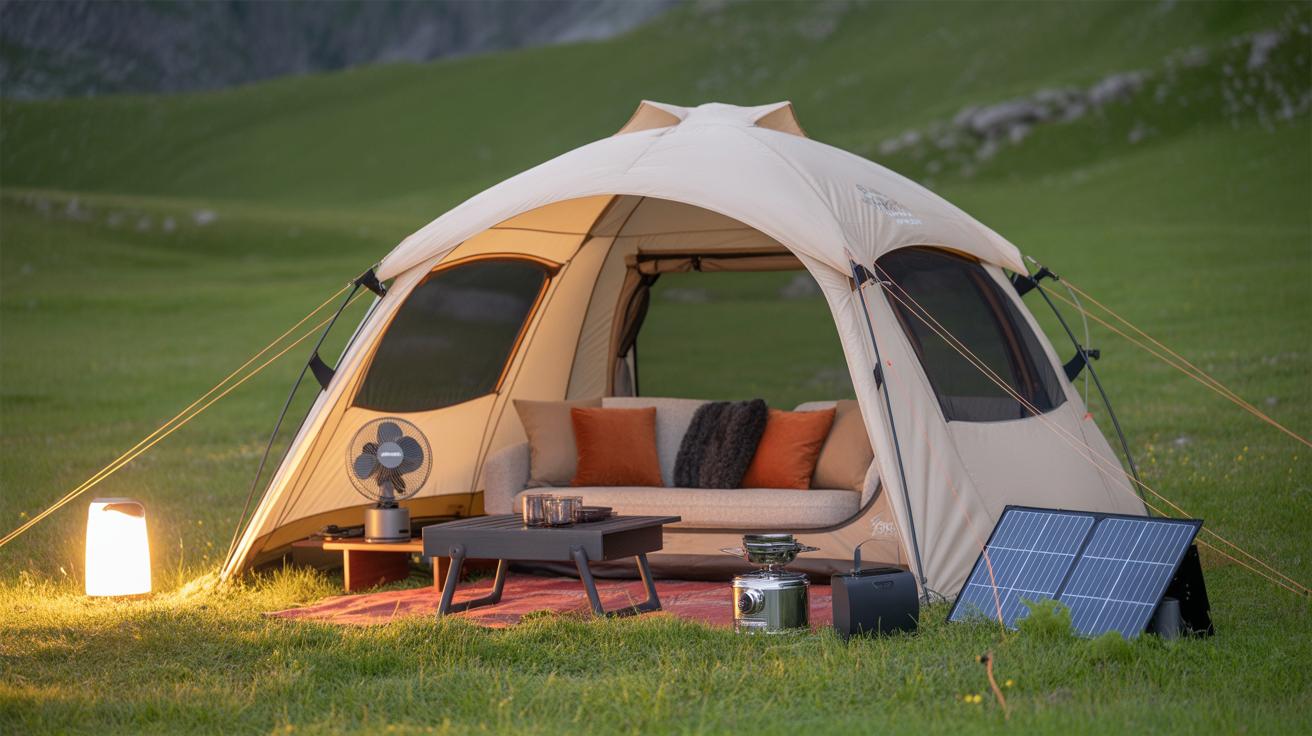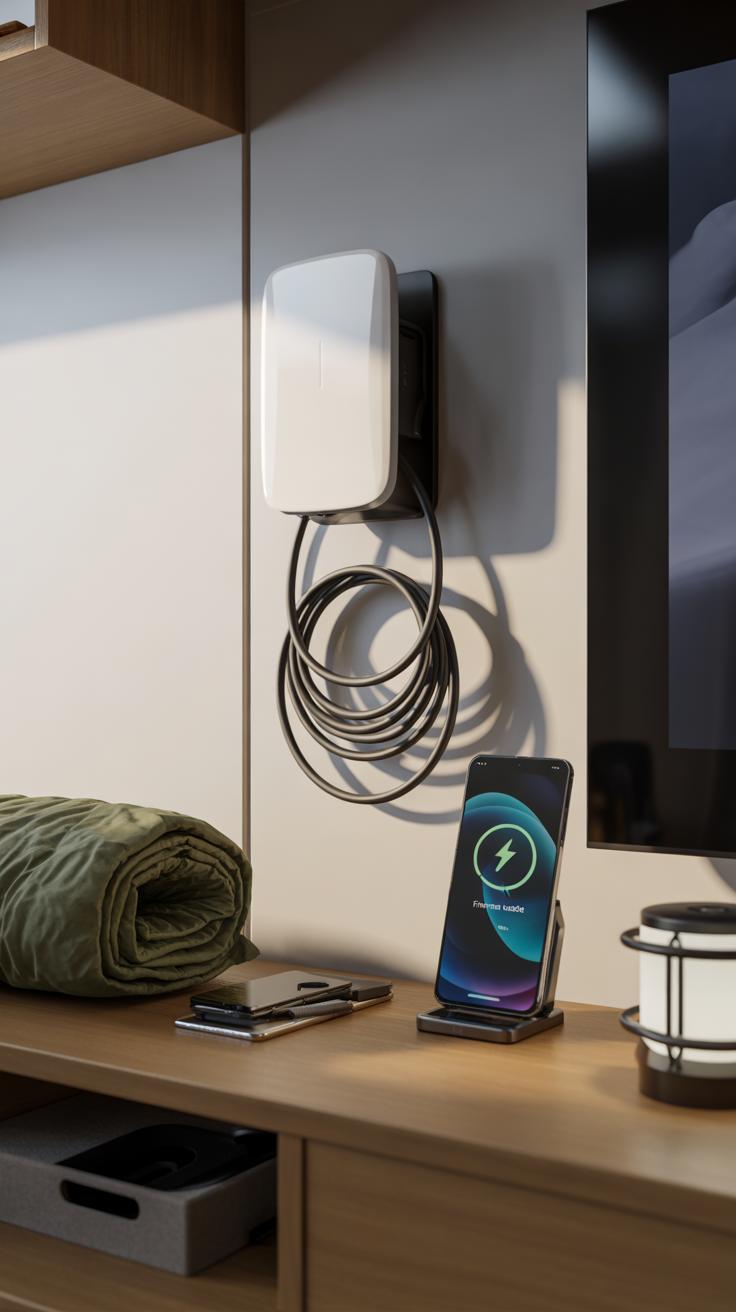Introduction
When you go camping, having the right gear can make your trip safer and more enjoyable. This article covers a camping checklist focusing on the must-have electronics and power banks. These gadgets help you stay connected, capture memories, and keep essential devices running during your outdoor adventures.
This checklist helps you prepare your electronics smartly, so you don’t forget important items. We’ll explore how to pick the best devices, keep them charged, and use them effectively in the wild. Your camping experience can improve a lot with the right tech by your side.
Camping Checklist Of Must Have
Understanding The Basics Of Camping Electronics
Camping electronics are gadgets designed to support and improve your outdoor experience. They aren’t just about convenience; sometimes, they’re about safety or staying connected. When you think of camping electronics, what comes to mind? Flashlights, GPS units, or maybe portable chargers are probably some of the first gadgets. These tools help you navigate, communicate, and light up the night.
Common electronics people pack include:
- Flashlights and headlamps: Essential for moving around after dark without fumbling.
- GPS devices: Useful if you’re trekking or exploring areas without reliable cell coverage.
- Two-way radios: Great for communication, especially if your group spreads out or cell service fails.
- Portable speakers: For added entertainment during campfires or downtime.
These gadgets might seem like luxuries, but they often make a big difference. They bring a layer of comfort and security. I remember a trip where my GPS saved me from walking hours in circles. It’s not just about fun; electronics sometimes keep you safe or make your trip run smoother. But then again, too much gear can weigh you down, so choosing the right ones matters a lot.
Types Of Electronics To Consider
Not every electronic device is worth packing, but some stand out for their practical use. Here are the key types to think about:
- Flashlights and headlamps: Often your primary light source—choose ones with adjustable brightness levels.
- GPS devices: Handheld units, separate from phones, avoid reliance on spotty cell signals.
- Radios: Especially handy in remote areas to communicate or catch weather updates.
- Portable speakers: A nice-to-have for music, but remember they need battery power and can disturb nature’s quiet.
- Power banks: These keep your devices charged, a small thing that can save frustration, especially if you rely on electronic maps or lighting.
Some campers swear by solar chargers, while others prefer compact batteries. Your choice will depend on your style and needs but knowing what exists helps you plan better.
Benefits Of Bringing Electronics
Electronics on a camping trip aren’t just about having something to play with. They serve multiple purposes, improving safety, convenience, and even entertainment.
- Safety: Flashlights and GPS devices help prevent accidents. Radios can alert you to emergencies.
- Entertainment: Portable speakers or e-readers keep you occupied during downtime or bad weather.
- Convenience: Power banks mean your devices won’t die midway through the trip, avoiding that anxious scramble to conserve batteries.
Of course, some might argue that too much tech takes away from the natural experience. That’s a point I’ve wondered about myself—there’s something about the rawness of camping without gadgets. But when things get tricky, having a bit of tech on hand feels reassuring. It’s a balance, and understanding the role electronics play will help you decide what to pack for your next adventure.
Choosing Your Electronics Wisely For Camping
Picking the right gadgets for camping can feel a bit tricky. You want devices that won’t weigh you down but still do what you need. Weight matters a lot—I remember dragging along a clunky speaker once and regretting it. So, focusing on lightweight, compact electronics usually makes sense. But don’t just think about size; utility counts too. What functions will actually come in handy where you’re going?
Battery life matters more than you might expect. If you’re on a multi-day outing, charging options might be limited. Bringing something with a long-lasting battery or easy recharge methods—like solar or power banks—can keep you connected or safe. Weather resistance is another factor that can’t be ignored. Electronics that handle rain, dust, or sudden drops without falling apart often save a lot of stress.
Consider Your Camping Location And Duration
Your camping spot shapes the gear you bring. If you’re set for a weekend in a car-accessible campground with electrical hookups, your choices can be less selective. But if you plan a week in remote backcountry, every ounce and feature counts. For example, GPS devices become more critical in wild, unfamiliar terrain. On a short forest stay, your phone might suffice for navigation and emergencies.
Think about the climate too. Rain or humidity means you need water-resistant, sealed devices. Snow or cold weather can sap batteries quickly, so maybe pack spares or keep devices close to your body for warmth. Duration also impacts how many power sources you’ll need. Two days? Maybe a single power bank is fine. Two weeks? That’s another story.
Prioritize Lightweight And Durable Devices
Heavy gadgets can turn fun into frustration fast. Lightweight electronics are easier to pack and carry, making your trip feel smoother. Durability shouldn’t be an afterthought either. Think about devices that survive bumps, drops, and some dirt—rugged phones, shockproof power banks, or water-resistant flashlights all fit the bill better than fragile counterparts.
It’s tempting to aim for the smallest, lightest device, but watch out for fragility. I’ve seen compact cameras shattered by one careless move. Sometimes, slightly bigger but tougher options pay off. If you’re unsure, reading reviews or testing before the trip might help you avoid equipment that won’t hold up in nature’s unpredictability.
Essential Electronics To Include On Your Camping Checklist
When putting together your camping checklist, some electronics simply cannot be skipped. These devices do more than just make life convenient—they often keep you safe and connected in ways that matter.
Safety Devices Like GPS And Radios
GPS units are not just fancy gadgets; they can be lifesavers. Imagine losing the trail as daylight fades—having a reliable GPS can cut down stress and help you find your way without guesswork. Radios, especially two-way models, keep you in touch with your group over distances where cell phones fail. Emergency beacons are even more critical. If something goes seriously wrong, these devices alert rescue services precisely where you are. They add a layer of security that tents and sleeping bags just can’t offer. I’ve seen friends rely on a beacon after getting separated from the group, and it made all the difference.
Lighting Tools Such As Flashlights And Headlamps
Light changes everything at a campsite. Flashlights and headlamps are more than simple helpers—they’re essential. Navigating trails in the dark, cooking meals after sunset, or just finding your way to the restroom can quickly turn frustrating without good lighting. Flashlights fit in your hand for focused beams, while headlamps free up your hands for tasks. I sometimes hesitate over which to pack, but having both feels right—flashlights for quick checks, headlamps when building a fire or setting up a tent at night. You just don’t want to be caught fumbling in the dark.
Power Banks And Portable Chargers For Extended Trips
When you’re camping days away from any outlet, portable power sources become your lifeline. Power banks come in many shapes and sizes—from small pocket-friendly ones to large, bulky chargers with multiple ports. There are also solar chargers, which rely on sunlight to replenish their energy, though they can be slow and weather-dependent.
Power banks store electrical energy that you can use anytime to charge phones, GPS devices, cameras, or even small lights. They basically hold a reserve battery, so when your device’s battery drops low, you simply plug it into the power bank instead of scrambling for a socket. It’s especially handy when you’re hiking or set up deep in the woods.
Not every power bank is equal. Some come with quick-charge options, and others can juice up multiple devices at once. But even the basic models will keep your essential electronics running, which often means the difference between pure frustration and a smooth, connected trip.
Choosing The Right Capacity For Your Power Bank
Picking the right size power bank isn’t straightforward. It mostly depends on what you’re powering and how often. Capacity is measured in milliampere-hours (mAh). For example, a typical smartphone battery is around 3000mAh, so a 10,000mAh power bank could, in theory, charge it about three times. Though sometimes losses happen, a bit of power gets wasted in the transfer.
If you only need to recharge your phone once or twice, a smaller 5000mAh charger might do. But for longer trips or multiple devices, something closer to 20,000mAh or more might suit you better. Remember to consider other electronics like cameras or GPS units—they add to the total drain.
Also think about weight and bulk. Huge power banks mean more charge but can be heavy to carry. Sometimes, a balance between capacity and portability is best depending on your trip’s demands.
Tips To Extend Power Bank Life During Camping
Keeping your power bank’s charge is almost an art while outdoors. You might want to limit charging your devices only when necessary—not every time they dip below 100%. It’s tempting to keep topping up your phone, but that can drain your reserve faster.
Try turning off unused features on your devices—Bluetooth, Wi-Fi, background apps—so they use less power and don’t need frequent charging. Also, charge your power bank whenever you have access to electricity; even a short charge can make a difference later.
If you have a solar charger, place it in direct sunlight for several hours during the day, though expect slower charging times. And, of course, store the power bank somewhere cool and dry; extreme temperatures can reduce its efficiency or damage it.
It’s always a bit of guesswork about how long your gadgets will last, so you might want to bring a little more power than you think you need. And hey, sometimes planning for the worst means you end up better prepared than you expected.
Managing And Organizing Your Electronics Efficiently
Packing your electronics for camping isn’t just about throwing chargers and gadgets into your bag—it requires some real thought to keep everything safe and easy to find. One thing I’ve learned from messy trips is that protecting devices from the usual outdoor nastiness—water, dirt, and those accidental drops—is key. Stashing your gear inside padded, weatherproof cases can save you a lot of frustration later. For instance, a shock-absorbent case for your phone or camera can prevent damage if you accidentally drop it while setting up camp or hiking nearby. Those silent, protective zippers that seal out dust and moisture might sound simple but they make a noticeable difference.
When it comes to organizing, consider using small pouches or bags—label them if you can. This way, cords, adapters, and smaller tech won’t end up in a jumbled mess, tangled beyond hope. You don’t want to waste time untangling cables after a long day outdoors, right? One trick is to roll or fold cables individually and secure them with a rubber band or reusable tie. Keep frequently used gadgets in an easy-to-reach section of your pack so you’re not fumbling around when you need your GPS or flashlight.
Think about which devices you’ll really need and which you can leave behind. Do you need your tablet, or will your phone suffice? Fewer items make organizing a bit simpler. After all, the last thing you want is to lose something critical because it slipped to the bottom of your bag. Have you ever found a charger you needed only after it was buried deep? I know I have, and it’s frustrating, especially when the battery’s running low.
Using Solar Chargers And Alternative Energy Sources
Solar chargers have become popular for camping, and for good reason. They turn sunlight directly into power, giving you a way to charge your devices without needing a plug or heavy batteries. Setting one up usually means just unfolding a panel and placing it where the sun hits best. It’s pretty straightforward, though the angle and season can affect how well it works—which makes you think about how reliable it really is in different settings.
These chargers are light and easy to carry, which suits the outdoors. Plus, they let you stay connected or use your gadgets longer when you’re far from a power source. But if the weather turns cloudy or you’re under dense trees, the power flow slows down quite a bit, sometimes frustratingly so. Still, they’re often better than nothing.
Beyond solar, there are other options you might want to try. Hand-crank chargers, for instance, need you to turn a handle to build power—you get exercise and energy at the same time, but you have to keep going to keep charging. Then, there are portable wind turbines, which can capture breezes. I’ve seen some campers set these up on windy ridges with mixed success; they can be a bit fiddly to install.
These alternative sources each have quirks, and maybe you’ll end up juggling a couple depending on the trip. It’s much about balancing how much effort you want to put in and how much power you actually need. So, when you pack, think about your energy habits and what fits your style. What if you underestimate your needs? Or what if the sun just doesn’t show up? You might want to have a backup plan.
Additional Useful Electronics For Comfort And Fun
When you think about camping, the basics often come to mind—flashlights, GPS, or power banks. But there’s room for a few extras that can make your trip a bit more enjoyable or comfortable. For example, portable speakers are a nice touch if you want some background music while cooking or relaxing by the fire. They don’t have to be huge or heavy, just something compact that can take a little mist or dust.
Digital cameras also deserve a spot on your list, especially if you like capturing moments beyond smartphone snaps. A rugged camera can handle outdoor conditions better, and sometimes the quality, especially in low light, surprises you. I’ve found myself appreciating a good zoom lens while trying to photograph wildlife.
There’s more than just entertainment, though. Some camping gadgets enhance comfort too. Think about small electric blankets—they run on power banks and keep you warm when the night gets colder than expected. Likewise, battery-operated fans might sound odd for outdoors, but trust me, on sticky summer nights, a gentle breeze inside your tent feels like a luxury. These devices require decent power management, so pairing them with your energy setup is key.
Entertainment Devices To Enjoy Nature
Bringing entertainment on a camping trip isn’t about blocking out nature but complementing it. E-readers loaded with your favorite books help during quiet moments, especially when you want to unwind without carrying heavy paperbacks. Plus, some come with adjustable backlighting for reading in tents at night.
Music players or phones with pre-downloaded playlists or podcasts keep the mood light, though you might want to keep volumes moderate to avoid disturbing the wildlife or other campers. Portable game consoles or handheld devices can be great for families, offering a little distraction when the weather turns sour or when kids need a break from exploring.
What kind of entertainment do you find fitting for a camping trip? Sometimes I wonder if we pack too much tech and miss out on just being there. Still, a little gadget here or there can open up fun moments without overwhelming the experience.
Comfort Enhancing Devices Like Electric Blankets Or Fans
Comfort outdoors isn’t only about tents or sleeping bags. Certain electronics offer practical warmth or cooling that makes camping more pleasant. Electric blankets powered by portable batteries can surprisingly extend your camping season into colder months. I recall a chilly autumn night when a small heated blanket was a game changer—it made the difference between waking up stiff or refreshed.
Similarly, battery-powered fans help when the air stalls inside tents on warm days. They’re lightweight and easy to pack. Just be aware how long your power source can keep them running. A quiet breeze can improve air circulation and prevent that stuffy feeling inside enclosed spaces.
But do you really need these gadgets? That depends on your priorities and conditions. They might seem unnecessary for some, but when the weather is unpredictable, these devices can add a surprising layer of comfort without complicating your gear too much.
Preparing Your Electronics Before And During The Camping Trip
Before you even step out the door, make sure your devices are fully charged. It might seem obvious, but I’ve seen more than one camping buddy scrambling for a charger last minute. Plug everything in—phones, power banks, GPS units—then leave them to top up overnight. You want maximum battery because there won’t always be a socket nearby.
Don’t just charge blindly though. Take a moment to update software and apps while you have a reliable connection. Those updates often fix bugs and improve battery management, which matters when you’re off-grid. Plus, you’ll avoid frustrating surprises if an app crashes or a device won’t sync.
Before packing, check your gear for obvious damage. Cracked screens, frayed cables, or loose connectors tend to worsen in the outdoors. Toss in all the cables, adapters, and maybe a backup charger you might need. It’s easy to overlook a missing USB cable until you’re stuck without a way to power up.
Once on site, think twice about where and how you use your electronics. Avoid placing devices directly on damp or uneven surfaces. Protect them from sudden weather changes, and never leave them unattended within easy reach. Theft can happen even in quiet campgrounds, and accidents like drops or water spills seem to happen right when you’re least prepared.
Have you tried using a dry bag or a small, padded case for your gear? Those little precautions can save you a headache or two. And remember, being careful doesn’t mean not enjoying your devices. Just keep them close, use them wisely, and maybe don’t expect to rely on them as much as you do at home.
Conclusions
Choosing the right electronics and power banks for camping means thinking about your needs and the trip length. Prioritize devices that add safety and convenience without extra weight. Power banks keep your devices ready when power outlets are far away.
With this checklist, you can pack smartly and avoid surprises. Think about your gadgets, charging plans, and how technology fits your outdoor plans. Planning ahead helps you focus on nature and enjoy your trip fully.

